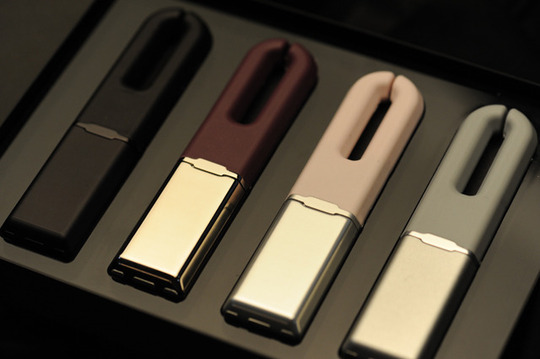Making hardware is easy. Making sex toys and selling them on Kickstarter is, sadly, hard. Though sex toy makers have long been lumped in with pornographers and and other businesses of ill repute, there is a new crop of sex toy makers looking to get real and hit the mainstream. And we must remember that the sex toy industry isn’t some furtive little market. The industry is worth over $15 billion per year and, whether Kickstarter likes it or not, millions of toys are sold per year to millions of happy customers.
It’s time for Kickstarter to experience a sexual awakening. Here’s why.
These toys are far more interesting than some secret massager hidden deep in your dresser. Modern sex toy makers are enabling cloud features, adding powerful silent motors, and expanding their selection from the traditional to the downright exotic. But Kickstarter as a company still can’t figure out its relationship with these devices, despite the fact that many of them clearly fall within the stated guidelines of the crowdfunding platform.
A Brief History
In the past, Kickstarter has ejected a number of projects that went on to blow way past their funding goals on other crowdfunding sites. Yet other products, most notably this MUA sex toy storage box, are accepted on the platform.
For example, Kickstarter rejected Crave Innovations, a company started by serial entrepreneur Michael Topolovac who had previously raised over $35 million for his software startup. In September, some six months after Kickstarter rejected Crave, the company raised $2.4 million from more than 60 prominent angels and entrepreneurs. For the record, that was $400,000 more than Topolovac had asked for to fund his first batch of toys.
In fact, after launching the Duet (Crave’s first pleasure product) on an alternative crowdfunding site CKIE, Crave blew past its $15,000 goal in the first two days, landing $100,000 in six weeks.

Meanwhile, Kickstarter also rejected LovePalz, a Wifi-powered set of devices that mimic sexual behavior remotely AKA teledildonics. In other words, one partner could feel the movements of their partner with a boy version (Zeus) and a girl version (Hera). The company claims to have sold 10,000 pieces since February, when the product officially launched. Each sells for $189, which accounts for a little under $2 million in sales.
Vibease, a company that created app-controlled vibrators in 2012, first tried to go the Kickstarter route before being rejected and instead used Indiegogo. With a goal of $30,000, Vibease went on to raise $130k during the summer campaign with shipments heading out in January.
Vibease is currently raising a seed round.
It would be OK if Kickstarter were consistent with its no-sex stance. But even though sex toys are out, misogynistic pick-up artist guides are fine.
This summer, for example, Kickstarter allowed a seduction guide with ethically questionable advice for men. Kickstarter grappled with removing the book before letting it live on, deciding that the 2 hours left on the campaign wasn’t enough time to investigate.
It all started after a comedian named Casey Malone wrote a blog post about the seduction guide, posting offensive excerpts from it. The author, Ken Hoinsky, argues that these quotes were taken out of context and were meant to inspire confidence, not violence.
Kickstarter later apologized for letting that kind of content live on the site and banned seduction guides.
But it seems the cold winter of sexual squeamishness is thawing. A designer named Lidia Bonilla launched the MUA box. That product lived on Kickstarter and eventually reached its funding goal. In Bonilla’s defense, however, she paid careful attention to Kickstarter’s guidelines to ensure that the project would be accepted on the end-all, be-all crowdfunding platform.
So with all this back and forth and outright banning, what exactly do Kickstarter’s guidelines say about sex-related products?
Well, nothing actually.
Confused?
Privately, the company has told rejected parties that they don’t accept vibrators at all, but this isn’t stated anywhere in the guidelines. I spoke to Kickstarter representatives repeatedly about this and they refused to go on the record but suggested that they haven’t figured out the rules internally.
Kickstarter starts out by giving two overarching guidelines: First, everything must be a project, which means that it has a clear end, a completion date of some sort, and that something will be produced as a result of the project’s completion. The second is that every project must fit into one of the following categories: Art, Comics, Dance, Design, Fashion, Film, Food, Games, Music, Photography, Publishing, Technology, and Theater.
Like any other hardware project on Kickstarter, the above sex toys would definitely be considered “projects”. They would also clearly pass muster of being either a technology or design project. Even both in some cases, as they evolve the original design of sex toys and include features never-before-seen in sex toys thanks to Wifi, various sensors, Bluetooth, and other improvements.
“We don’t curate projects based on taste. Instead, we do a quick check to make sure they meet these guidelines,” reads the website.
Then, the company moves beyond these main guidelines into more specific rules. None of them relate to sex toys at all, except for one:
No offensive material (hate speech, etc.); pornographic material; or projects endorsing or opposing a political candidate.
The pornographic material bit is unclear. One can assume that any Kickstarter video that shows sex or feigns sex of any kind is considered pornographic, but is a sex toy (independent from people or a sexual scenario) considered pornographic? And more importantly, should it be?
The MUA box, for example, shows various sex toys within the promotional video. They aren’t being used, but rather are stored in a pleasure product organizer. So what is the difference between the MUA video and, say, this video, submitted by Crave?
Both are informational, focused on the product, its design, and its viability as a business.
The LovePalz video is admittedly more racy than the other two, but does that mean that two people, fully dressed, in a bed together is pornographic?
Am I splitting hairs? Perhaps. But is Kickstarter’s policy on sex toys important? Absolutely.
Sex Toy Makers Are Makers, Too
It’s 2014, people.
There was a time when a woman’s sexuality was seen as a disruption to man’s harmonious relationship with God or the State. As recently as the fifties, Freud argued that women should only achieve vaginal orgasms. If they couldn’t, they were a failure. If they could achieve clitoral orgasm, on the other hand, they were considered masculine or immature. That is wrong.
 Before vibrators were a key function of our smartphones or our sex toys, they were first invented to help male doctors treat female hysteria. Instead of wearing out their wrists masturbating women (yes, this happened), they just built a steam-powered vibrator.
Before vibrators were a key function of our smartphones or our sex toys, they were first invented to help male doctors treat female hysteria. Instead of wearing out their wrists masturbating women (yes, this happened), they just built a steam-powered vibrator.
And yet look how far we’ve come. In the U.S., we’re more sexually liberated than we’ve ever been. Sex toys are fun, flashy, and no longer objects of derision. Sex has driven almost every major breakthrough in technology in the past few decades. The internet speaks for itself — sex is everywhere. The invention of chat gave us cyber sex. The ubiquity of video on the internet started with the desire to digitize porn. Even new technology like Vine and Instagram and Snapchat left us with Vineporn and Nastygrams and Snap Spam.
So why should participants in the hardware revolution miss out?
Despite multiple requests to discuss the line between pornographic and not, Kickstarter offered no clarification. But that’s their right.
If they worry that a teenager might see a sex toy on the site, the company has every right to avoid that scenario, no matter how ridiculous the concern might be. (Most sex toy sites don’t have an 18+ gate. If a teenager wants to find sex on the internet, Kickstarter is the last place they’d go.) Still, if Kickstarter is concerned about sexual or adult content, the crowdfunding site can simply exclude sex toy makers from the service.
What’s not so cool is the fact that Kickstarter can’t give more insight into the line between too sexy and suitable. Why does a box that stores sex toys make it on the site but a discreet vibrator gets rejected?
Entrepreneurs for hardware companies have to be as frugal as possible because they’re building something physical that costs money to make and to distribute. Kickstarter has made that journey easier for many of them, who can afford to make a few prototypes, a nice video, and send in an application. But not for those who make sex toys. They are forced to go to other crowdfunding sites (and still succeed wildly) after wasting time and resources on Kickstarter.
Maybe Kickstarter isn’t the home for makers?
What Next?
The sex toy industry is worth $15 billion annually. Breakthrough technologies like the smartphone, various sensors, and the ubiquity of connectivity have paved the way for a true era of disruption in the sex toy industry, transforming what has long been a store full of awkward, dick-shaped vibrators into shelves full of connected, intuitive, design-centric pleasure products.
Kickstarter has the opportunity to be a part of this just as much as it has the right to avoid this sexually charged hardware revolution. That decision is entirely up to the company. Where Kickstarter shouldn’t have a choice is in the guidelines regarding what is accepted and what isn’t.
The Kickstarter business is entirely dependent on entrepreneurs. By alienating certain entrepreneurs, or being unclear about the guidelines of the platform, Kickstarter is ultimately damaging the key to its own success, as well as the success of these sex toy makers.
People want to get off. Why won’t Kickstarter let them?
